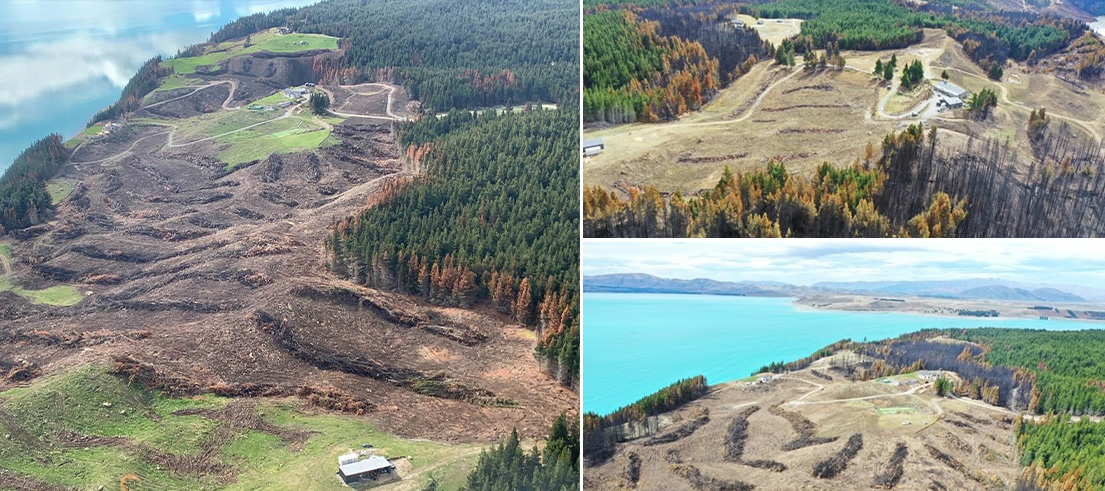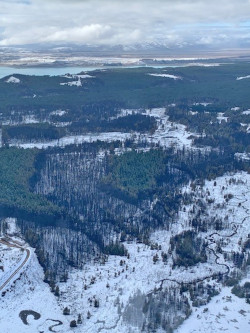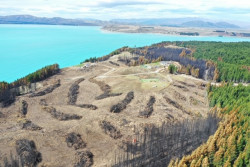
Work continues on Pukaki wildfire recovery and wilding removal
With the fire risk in Canterbury remaining high, the fires by Lake Pukaki in August 2020 and Lake Ōhau in October 2020 remind us of the devastation that wildfires can cause.
The silver lining of the fires is that they have served to increase community awareness of the fire hazard associated with wilding pines. We have developed fire plans for its wilding pine control work and continue to assist landowners with cleaning up dead trees.

The Pukaki fire burned through over 3,500 hectares.
Pukaki fire - how it all happened
The Pukaki fire was believed to be started by a cooking stove, and it burned through over 3,500 hectares. It took a concerted effort to extinguish the fire – 18 helicopters, two planes, five diggers, and over 150 personnel were involved.
The fire was fuelled by wilding pines, which are introduced pine trees growing in the wrong place. The rapid spread of wilding pines means they can quickly smother native species, reduce economic production from affected land, decrease water availability in catchments, as well as increase an area’s susceptibility to extreme wildfires.
Unlike commercial forests, wilding pine forests don’t have firebreaks or fire prevention plans in place to reduce the impact of a fire within that forest. Wilding pines provided fuel for the Pukaki fire, increasing its intensity.
Prevention plans
Since the fire, we have been working with Fire and Emergency NZ (FENZ) and Mackenzie District Council to support the local landowners affected by the fire.
Burnt trees have been cleared from prioritised areas, and we continue to work with landowners to get rid of remnant wilding pines from their land.

Burnt trees have been cleared from prioritised areas.
It is vitally important that wilding pines are removed and do not return to this land. They present an ongoing risk to business and property in the area, with wilding infestations covering more than 25,000 hectares around Lake Pukaki.
Additionally, if wilding pines are not controlled, they could cost New Zealand $625 million in wildfire prevention costs by 2050 (Cost Benefit Analysis 2018).
Special projects biosecurity officer Lance Smith has been working with FENZ to design rows of damaged trees properly in accordance with fire prevention practices.
Reducing fire risks
Smith has also been working with landowners to remove wilding pines from their property to reduce future fire risk.
"Working with FENZ has been an eye-opening experience – we are still working on the best technique to reduce fire hazard, with each property varying because of topography and the landowners’ land use requirements. When the wilding forests we are removing have no value, we create windrows," Smith said.
"What we have to remember is these windrows remain a fire hazard initially, so there are guidelines to help minimise this. Since the fires, 99% of landowners are keen to do something with their wildings because they see the risk to them and neighbours.
"Additionally, this work will help future-proof our region as the danger of wildfires looks to increase with climate change.”
Find out more about wilding pine control in Canterbury.
